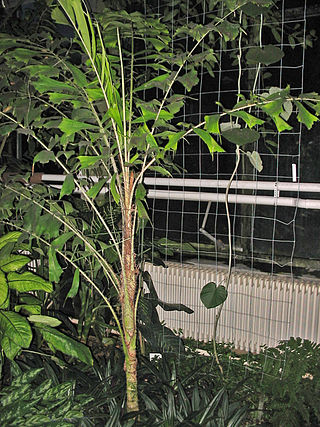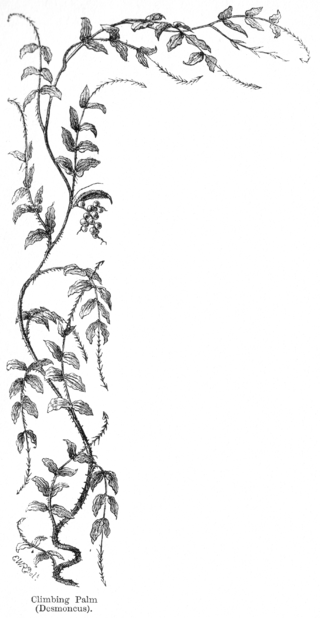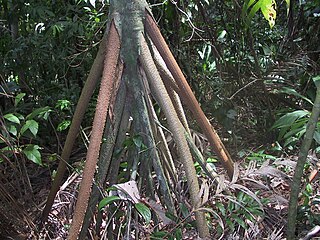
The orchid genus Dracula, abbreviated as Drac in horticultural trade, consists of 118 species native to Mexico, Central America, Colombia, Ecuador and Peru. The name Dracula literally means "little dragon", an allusion to the mythical Count Dracula, a lead character in numerous vampire novels and films. The name was applied to the orchid because of the blood-red color of several of the species, and the strange aspect of the long spurs of the sepals. The plants were once included in the genus Masdevallia, but became a separate genus in 1978. This genus has been placed in the subtribe Pleurothallidinae.

Páramo may refer to a variety of alpine tundra ecosystems located in the Andes Mountain Range, South America. Some ecologists describe the páramo broadly as "all high, tropical, montane vegetation above the continuous timberline". A narrower term classifies the páramo according to its regional placement in the northern Andes of South America and adjacent southern Central America. The páramo is the ecosystem of the regions above the continuous forest line, yet below the permanent snowline. It is a "Neotropical high mountain biome with a vegetation composed mainly of giant rosette plants, shrubs and grasses". According to scientists, páramos may be "evolutionary hot spots", that meaning that it's among the fastest evolving regions on Earth.

Aiphanes is a genus of spiny palms which is native to tropical regions of South and Central America and the Caribbean. There are about 26 species in the genus, ranging in size from understorey shrubs with subterranean stems to subcanopy trees as tall as 20 metres (66 ft). Most have pinnately compound leaves ; one species has entire leaves. Stems, leaves and sometimes even the fruit are covered with spines. Plants flower repeatedly over the course of their lifespan and have separate male and female flowers, although these are borne together on the same inflorescence. Although records of pollinators are limited, most species appear to be pollinated by insects. The fruit are eaten by several birds and mammals, including at least two species of amazon parrots.

Azorella is a genus of flowering plants in the family Apiaceae, native to South America, New Zealand, southeastern Australia, and the islands of the Southern Ocean.

The Colombian weasel, also known as Don Felipe's weasel, is a very rare species of weasel only known with certainty from the departments of Huila and Cauca in Colombia and nearby northern Ecuador. Both its scientific and alternative common name honours the mammalogist Philip "Don Felipe" Hershkovitz.

Desmoncus is a genus of mostly climbing, spiny palms native to the Neotropics. The genus extends from Mexico in the north to Brazil and Bolivia in the south, with two species present in the southeastern Caribbean.
Microryzomys altissimus, also known as the Páramo colilargo or highland small rice rat, is a species of rodent in the genus Microryzomys of family Cricetidae. It is found in Colombia, Ecuador, and Peru, but the Colombian segment may be a separate species.

The rainbow-bearded thornbill is a species of hummingbird in the "coquettes", tribe Lesbiini of subfamily Lesbiinae. It is found in Colombia, Ecuador, and Peru.
Baccharis aretioides is a species of flowering plant in the family Asteraceae that is endemic to Ecuador. Its natural habitat is subtropical or tropical high-altitude grassland. It is threatened by habitat loss.

Draba aretioides is a species of flowering plant in the family Brassicaceae. It is found only in Ecuador. Its natural habitat is rocky areas. Cushion forming herb, on soil formed from calcareous rock. Foliage grayish-green. Flowers white to yellowish.

Wettinia is a genus of flowering plants in the palm family Arecaceae. The genus, established in 1837, contains some 20 species, but more seem to await discovery considering that 4 species - W. aequatorialis, W. lanata, W. minima and W. panamensis - were described as late as 1995. The genus is broadly divided into two groups. One group has the fruits tightly packed, while the other, formerly classified as genus Catoblastus, has fruits scattered along the inflorescence branches. It is not known whether these groups are both monophyletic. The genus is named after Frederick Augustus II of Saxony, of the House of Wettin.

The Choco broad-nosed bat is a species of bat in the family Phyllostomidae. It is native to Colombia, Panama, and Ecuador, where it is found in the Choco region lowlands. It is threatened by habitat loss. In 2013, Bat Conservation International listed this species as one of the 35 species of its worldwide priority list of conservation.

Brunellia is a genus of trees. They are distributed in the mountainous regions of southern Mexico, Central America, West Indies, and South America. Brunellia is the only genus in the family Brunelliaceae. As of 2001 there were about 54 species.

Lysipomia aretioides is a species of plant in the family Campanulaceae. It is endemic to Ecuador. Its natural habitats are subtropical or tropical high-altitude shrubland and subtropical or tropical high-altitude grassland. It is threatened by habitat loss.
Valeriana aretioides is a species of plant in the family Valerianaceae. It is endemic to Ecuador. Its natural habitat is subtropical or tropical high-altitude grassland.

Socratea is a genus of five species of palms found in tropical Central America and South America.

Pholidostachys is a genus of palms found in Central America and northwestern South America.

The western lowland olingo is a species of olingo from Central and South America, where it is known from Panama and from Colombia and Ecuador west of the Andes.
Lonchophylla orienticollina is a species of bat found in Colombia, Venezuela, and Ecuador.

Sturnira bakeri is a species of bat found in South-America.















